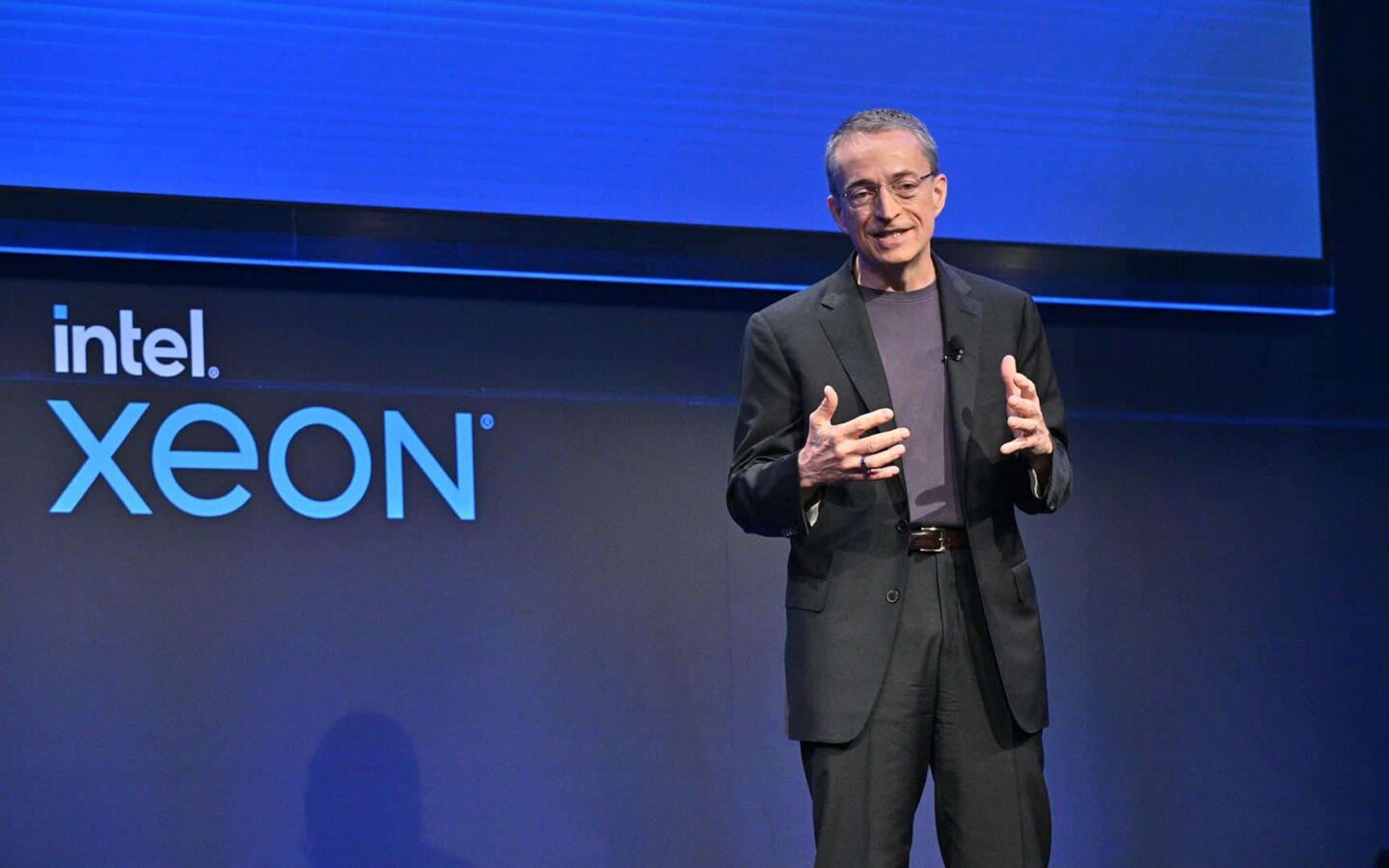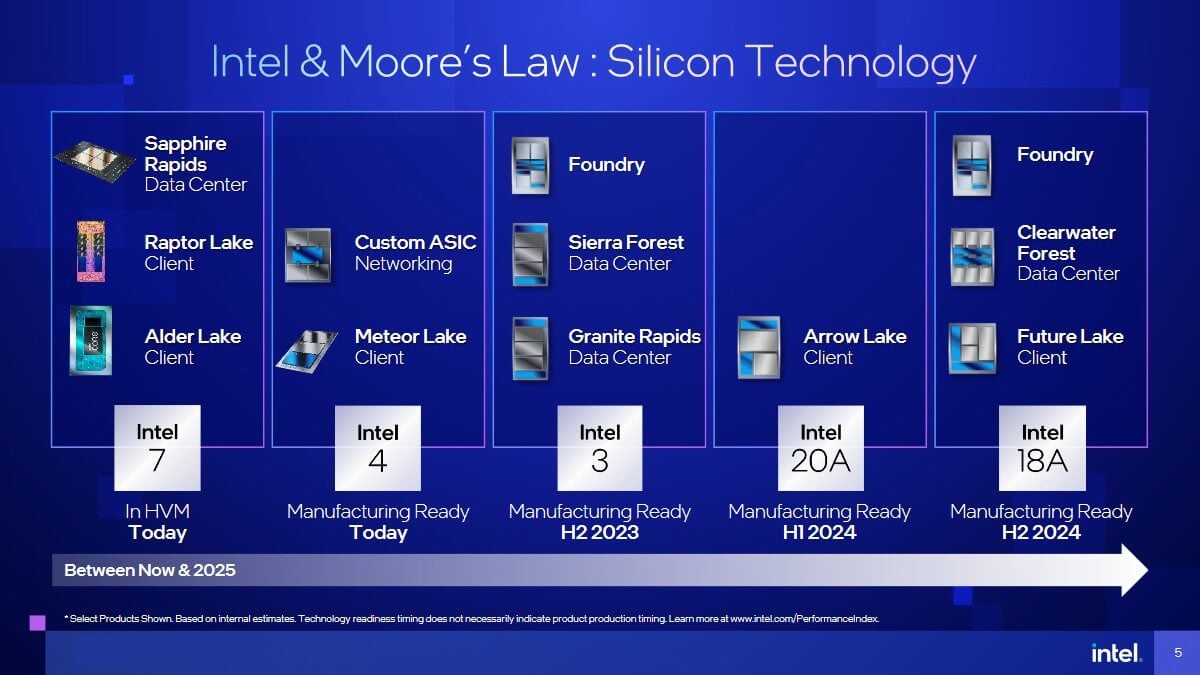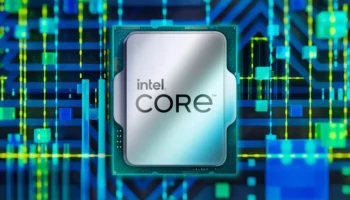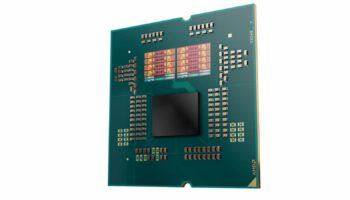
The other day Intel reported its first profitable quarter after enduring multiple losses in a row. Unlike most semiconductor companies, Team Blue relies heavily on the PC market for the lion’s share of its revenue. Consequently, a weak PC market means a weak Intel, which we’ve seen over the last several quarters. Luckily for the chipmaker, the worst is behind it, and things can only improve from here on.

CEO Pat Gelsinger reaffirmed Intel’s CPU roadmap during the earnings call, stating that all advanced process nodes are on track and will release as per the original schedule. 14th Gen Meteor Lake is slated to launch later this year based on Intel 4, its first EUV process node. Intel 3 also met its defect density and performance milestones for Q2 and is on track for an early 2024 launch with Sierra Forest. Granite Rapids will be the second Xeon family to leverage the Intel 3 node.
I am pleased to report that all our programs are on or ahead of schedule. We remain on track for 5 nodes in 5 years and to regain transistor performance and power performance leadership by 2025.
Intel 7 is done and with the second-half launch of Meteor Lake, Intel 4, our first EUV node is essentially complete with production ramping. For the remaining three nodes, I would highlight Intel 3 met defect density and performance milestones in Q2, we reached PVK 1.1 and is on track for overall yields and performance targets. We will launch Sierra Forest in first half of 24 with Granite Rapids following shortly thereafter, our lead vehicles for Intel 3.
On Intel 20A, our first process node using both RibbonFET and PowerVia, Arrow Lake, our volume client product is currently running its first stepping in the fab. In Q2, we announced that we will be the first to implement back-side power delivery silicon 2+ years ahead of the industry enabling power savings, area efficiency, and performance gains for increased compute demand, ideal for use cases like AI, CPUs, and graphics. In addition, backside power improves ease of design, a major benefit not only for our own product but more so even for our foundry customers.
On Intel 18A, we continue to run internal and external chips and we remain on track to be manufacturing-ready by the second half of 2024.
Pat Gelsinger, Intel CEO
Intel 20A is the next process to land in the second half of 2024 with Arrow Lake. It will be the first to use RibbonFET (GAA) and PowerVia, and its first stepping is already running in the fabs. Back-side power delivery silicon may be a major advantage for Intel and its foundry customers.
Looking further ahead, we’ve got the Intel 18A node which will power the 16th Gen Lunar Lake and Clearwater Forest families. It is on track to be manufacturing-ready by the end of 2024.
Our data center CPU roadmap continues to get stronger and remains on or incrementally ahead of schedule with Emerald Rapids, our 5th Gen Xeon Scalable, set to launch in Q4 2023, Sierra Forest, our lead vehicle for Intel 3 will launch in first half of 24, Granite Rapids will follow shortly thereafter.
For both Sierra Forest and Granite Rapids, volume validation with customers is progressing ahead of schedule. Multiple Sierra Forest customers have powered on their boards and silicon is hitting all performance and power targets. Clearwater Forest, the follow-on to Sierra Forest, will come to market in 2025 and be manufactured on Intel 18A.
Pat Gelsinger, Intel CEO
Intel’s data center division has been struggling of late. Sapphire Rapids was a particularly delayed product and continues to struggle against AMD’s Genoa and Genoa-X. Regardless, 5th Gen Xeon Emerald Rapids is slated to land in the last quarter of this year, followed by Sierra Forest in the first half of 2024.
Sierra Forest will be Intel’s response to AMD’s Epyc Bergamo lineup, a cloud-centric design focusing on compute throughput and optimized die area. Like Granite Rapids, it’ll leverage the Intel 3 process. Per Gelsinger, volume validation with clients is progressing ahead of schedule, and multiple Sierra Forest customers are already testing their samples.
Finally, there’s Clearwater Forest, the successor to Sierra Forest. It is expected to hit the market in 2025, leveraging the Intel 18A process node.





